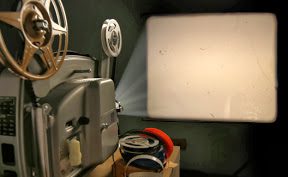Scholars and practitioners of workplace learning have put forward the claim that using film and other forms of multimedia enhances learning. However, the evidence of film’s usefulness in a corporate learning setting has been far from convincing.
The research showing the impact of film on learning is largely anecdotal, and the empirical research that has been done has not focused on workplace learning but rather on other contexts such as language learning and the traditional college setting. Often, the anecdotal evidence suggested film increased engagement.
My doctoral research study, titled “Total Recall: Using Film to Enhance Learning,” involved an experiment that contributes to the theory that using film in a corporate learning setting can lead to significant improvement in information retention. Compared with the existing literature on this topic, the results of this research offer the most comprehensive randomized experiment available.
This experiment included four different situations with and without film for participants in a similar workplace learning setting, and an identical survey to measure information retention from control and treatment groups. The experiment was conducted during a five-month period, on three continents and in five countries, including 339 participants from different cultures.
By using quantitative statistical analysis, including multiregression analysis, this study culminated in a pedagogical model called “Total Recall.” This model consists of four recommendations for using film in a corporate learning setting.
Use shorter clips lasting two to five minutes: A series of 10 clips taken from popular Hollywood films, on average the shortest in length of the experiment’s four film instances, reflected the highest percentage and the highest number of correct answers compared with the longer clips. While this may have been partially caused by another factor discussed in the next paragraph, the findings suggest that shorter is better.
Use written words to highlight key points: Edit keywords into the video so they will appear visually at approximately the same time they are spoken or after messages are delivered. This is inspired by American educational psychologist Richard Mayer’s theory of “signaling” and was used in two of the four film experiences. The longest of the film experiences lasts more than 10 minutes, and does not fall into the “shorter is better” category. Yet, the film score experienced a statistically significant boost compared with the no-film score. The Hollywood clips performed much better than the other three clips. Therefore, something else in addition to “shorter is better” contributed to the Hollywood clips’ much higher score. This finding suggests the enhanced performances are primarily because of the effect of keywords appearing for several seconds to reinforce an important message.
Feature credible leaders in videos used for managerial training: Compared with participants who are individual contributors, people managers scored significantly higher with messages that featured leaders. There were no score differences between people managers and individual contributors with regard to the Hollywood set of videos. This study suggests the score boost is because of the people managers’ ability to naturally develop an emotional connection with the leaders featured on film. They can relate to the leaders’ managerial responsibilities, and a higher percentage of the people managers, as opposed to the individual contributors, have come in direct contact with the leaders appearing on the films.
Use video when delivering training in participants’ secondary language: Participants in Asia and Europe scored significantly higher than North American participants when an important change curve message was enhanced with film. These results suggest the score boosts are because the North American participants, who received the change curve information via their mother tongue, did not need the film clips as much as the Asian and European groups to increase their understanding.
Because English is not the first language for most of the Asia- and Europe-based participants, the use of the film clips increased their understanding of an abstract notion of a change curve, or had a greater effect compared with the North American participants.















